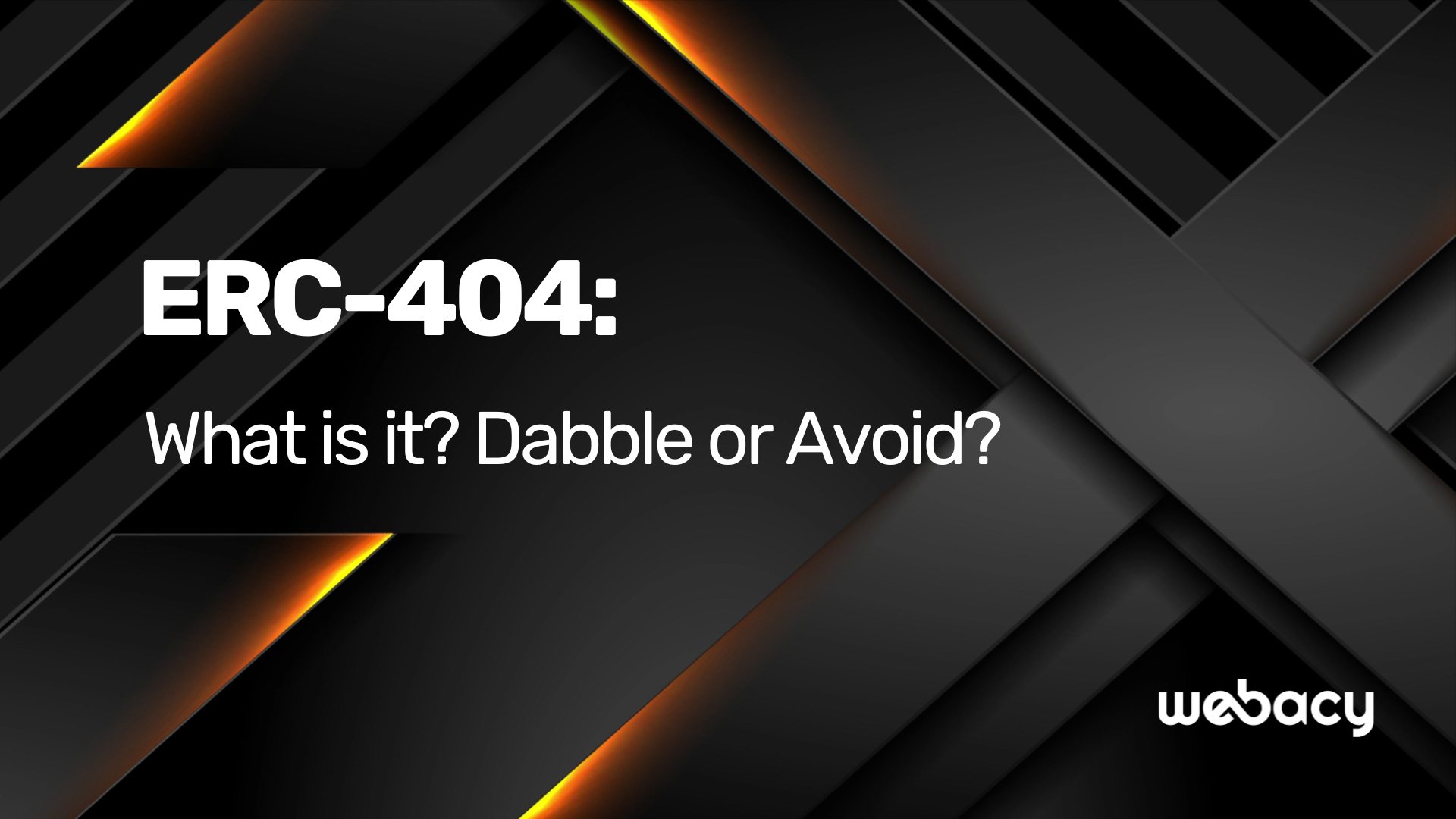ERC-404: What is it? Dabble or Avoid?

In the dynamic realm of blockchain and digital assets, the introduction of ERC-404 marks a significant evolution. As a novel token standard on the Ethereum blockchain, ERC-404 emerges as a hybrid, combining the features of ERC-20 fungible tokens and ERC-721 non-fungible tokens (NFTs).
This standard facilitates the fractionalization of NFTs, enabling owners to split their digital assets into up to 100,000 separate pieces. This mechanism not only democratizes ownership by allowing multiple individuals to hold a stake in a single NFT but also enhances liquidity in the market, a feature often missing from the traditional NFT space.
However, alongside its innovative benefits, ERC-404 introduces significant security concerns. Developers and users have reported vulnerabilities where the manipulation of token balances could inadvertently allow malicious actors to gain unauthorized access to someone's NFT.
What Is ERC-404?
ERC-404, developed by pseudonymous creators "ctrl" and "Acme," (always a cause for pause) represents an experimental yet unofficial token standard. It aims to facilitate a new form of digital asset that possesses both the divisibility of ERC-20 tokens and the uniqueness of ERC-721 tokens, hence dubbed "semi-fungible." This standard introduces a mechanism where NFTs can be broken down into smaller, fungible units, offering a novel solution to the liquidity and flexibility challenges faced by traditional NFTs.
ERC-404 is a groundbreaking yet experimental token standard that merges the characteristics of ERC-20 fungible tokens with ERC-721 non-fungible tokens (NFTs), creating a new category of "semi-fungible" digital assets. This innovative approach allows for the fractionalization of NFTs, offering a new level of liquidity and flexibility in trading and ownership of digital assets.
How Does ERC-404 Work?
The ERC-404 standard operates on a mint-and-burn mechanism, enabling the fractional transfers of an NFT. In essence, when a full token representing an NFT is bought, the corresponding NFT is minted to the buyer's wallet. Conversely, when fractions of the token are sold, the linked NFT is burned. This system allows for dynamic ownership of fractional parts of an NFT, automatically minting new NFTs when a wallet accumulates enough fractions to constitute a complete token.
The Appeal of ERC-404
The introduction of ERC-404 addresses a critical gap in the NFT market: liquidity. By enabling the fractionalization of NFTs, ERC-404 tokens offer a more granular level of ownership and trading, potentially widening the market for high-value digital assets by making them accessible to a broader audience. This could lead to increased liquidity and engagement within the NFT space, opening up new opportunities for creators and investors alike.
Why Might It Be Unsafe?
Despite its innovative approach and benefits, ERC-404 carries inherent risks, primarily due to its complexity and the newness of the technology. The standard's ability to manipulate token balances for fractionalization purposes can inadvertently open doors for attackers to exploit vulnerabilities, like moving around fractionalized tokens to fool volume thresholds, which can lead to the unauthorized theft of NFTs. As with any new blockchain technology, the security of ERC-404 is not fully proven, and early adopters face the risk of unknown vulnerabilities.
The safety of interacting with ERC-404 tokens is a complex issue due to the standard's unofficial and unaudited status. The lack of formal vetting through the Ethereum Improvement Proposal (EIP) process means that potential vulnerabilities and inefficiencies may not have been fully addressed. This absence of official scrutiny raises security concerns, particularly around the integration of such tokens into broader projects and the Ethereum ecosystem at large. Projects like Pandora have initiated audits to address these concerns, but the community is urged to proceed with caution and conduct thorough research before engaging with ERC-404 tokens or related projects.
Users are encouraged to wait for broader adoption by established platforms and wallets, which have more resources to test and secure their integrations.
Implementing additional security measures, such as using services like Webacy, can provide extra layers of protection against potential exploits.
Moreover, the importance of conducting thorough research cannot be overstated. Users should familiarize themselves with the technical workings, potential vulnerabilities, and security practices related to ERC-404 and other new technologies before engaging with them.
The Birth of Pandora: ERC-404 in Action
Pandora exemplifies the ERC-404 standard in action, offering a dynamic model where buying a full Pandora token results in the minting of a corresponding "Replicant" NFT to the buyer's wallet. Conversely, selling the token leads to the burning of its connected NFT. This interaction introduces a novel way to engage with digital assets, emphasizing the concept of rarity and the potential for users to "reroll" the rarities of the NFTs they receive. Such mechanisms enhance user engagement and investment in the ecosystem, although they also underscore the experimental nature of ERC-404 and the need for caution.
Potential and Risks of ERC-404
The introduction of ERC-404 has sparked considerable interest in the crypto community, evidenced by the vibrant trading activity around Pandora and similar projects. This attention highlights the standard's potential to revolutionize digital asset creation, trading, and valuation. However, the risks associated with its unaudited nature and lack of formal recognition cannot be ignored. These factors could expose users to unforeseen vulnerabilities, emphasizing the importance of proceeding with caution, utilizing secure wallets, and staying informed about the latest developments in the ERC-404 space.
The Balance Between Innovation and Security in ERC-404
While ERC-404 presents exciting possibilities for the future of digital assets, its current unofficial and unaudited status introduces a layer of risk that users must navigate. The crypto community is encouraged to keep a close eye on further developments, audits, and potentially formal recognition of ERC-404, as these could significantly impact the standard's safety and utility in the Ethereum ecosystem. As always, DYOR, and be smart and protected with Webacy.